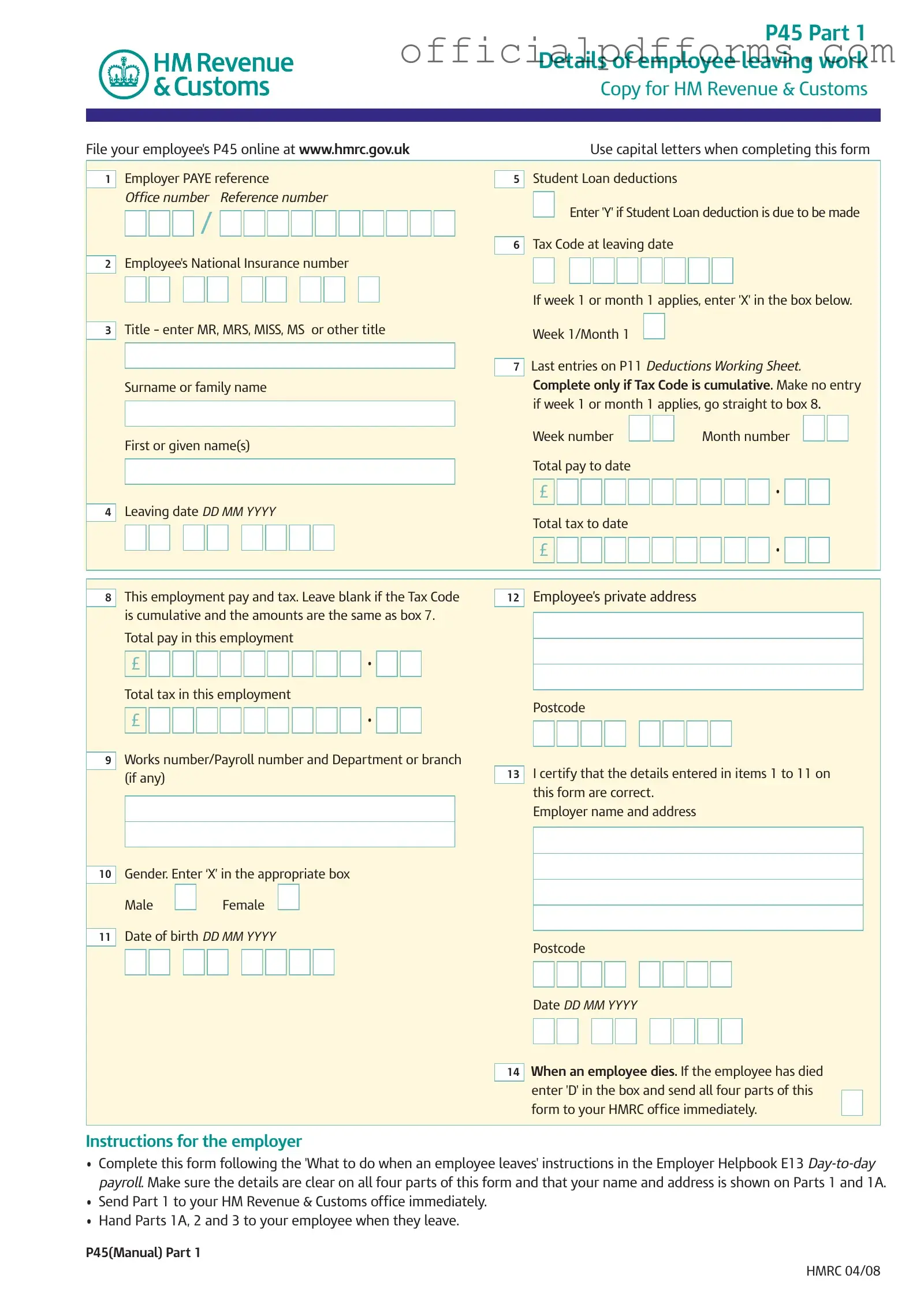Fill in a Valid P 45 It Form
The P45 It form is an official document used in the UK to provide details about an employee who has left their job. It serves as a record of the employee's pay and tax deductions up to the date of leaving, ensuring a smooth transition for both the employee and the new employer. For assistance with filling out this form, click the button below.
Access Form Online
